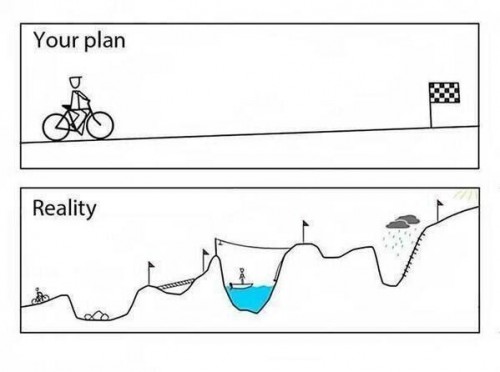Mais um artigo interessante artigo no WSJ do passado Sábado, "99% of Big Projects Fail. Lego Is the Fix."
BTW, um artigo e um tema alinhado com a estória do palco-altar que se transforma na hipotética criação de uma nova zona especial de corrida, e não sei que mais. Um artigo alinhado com o relato de Antonio Nieto-Rodriguez sobre o aeroporto de Berlim. Um artigo alinhado com o que Daniel Kahnman escreve em "Thinking, Fast and Slow" sobre a "planning fallacy" e onde cita Flyvbjerg, o académico focado no artigo do WSJ referido acima que apresenta o seu livro publicado recentemente "How Big Things Get Done":
"Spoiler alert! Big things get done very badly.
They cost too much. They take too long. They fall too short of expectations too often. This is what Dr. Flyvbjerg calls the Iron Law of Megaprojects: "over budget, over time, under benefits, over and over again."
The Iron Law of Megaprojects might sound familiar to anyone who has survived a home renovation. But when Dr. Flyvbjerg dug into the numbers, the financial overruns and time delays were more common than he expected. And worse. Much worse.
His seminal work on big projects can be distilled into three pitiful numbers:
- 47.9% are delivered on budget.
- 8.5% are delivered on budget and on time.
- 0.5% are delivered on budget, on time and with the projected benefits.
It's brutal enough that 99.5% miss the mark in one way or another."
Lembram-se de Jorge Coelho dizer que o aeroporto da Portela ia ficar lotado? Há quantos anos foi?
"Humans are optimistic by nature and underestimate how long it takes to complete future tasks. It doesn't seem to matter how many times we fall prey to this cognitive bias known as the planning fallacy. We can always ignore our previous mishaps and delude ourselves into believing this time will be different. We're also subject to the power dynamics and competitive forces that complicate reality, since megaprojects don't take place in controlled environments, and they are plagued by politics as much as psychology. Take funding, for example. "How do you get funding?" he said. "By making it look good on paper. You underestimate the cost so it looks cheaper, and you underestimate the schedule so it looks like you can do it faster.""




%2006.21.jpeg)












